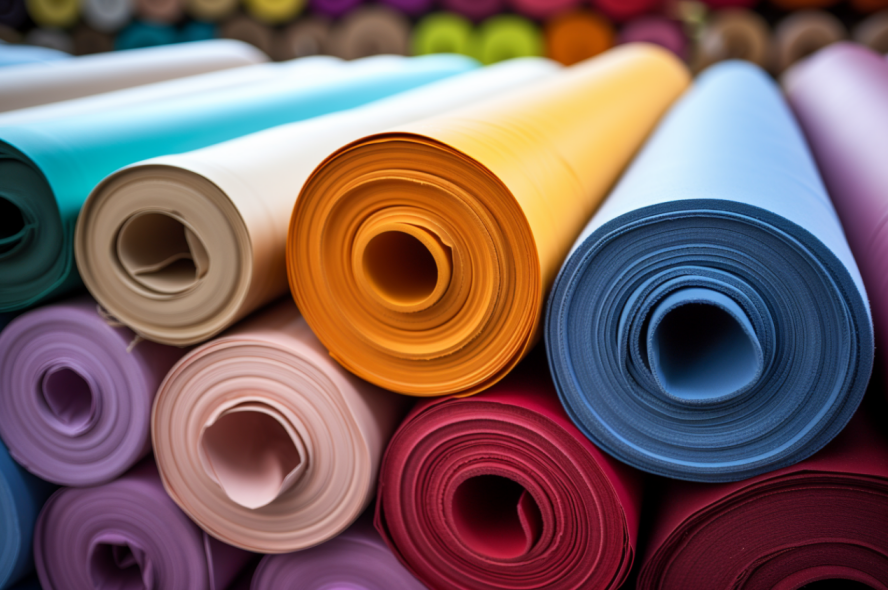Get Ahead with Latex: Rolls Available for Sale Now!
Latex rolls, a versatile and essential material in various industries, are sheets or rolls made from natural or synthetic latex. With a history dating back centuries, latex rolls have evolved from being primarily used in textiles to finding applications in healthcare, construction, manufacturing, and more.
Introduction to Latex Rolls
1.1 Defining Latex Rolls
Latex rolls originated from the rubber tree, Hevea brasiliensis, which produces latex sap. Traditionally, this sap was processed to create rubber products. Over time, advancements in technology led to the production of synthetic latex, broadening the scope of applications for latex rolls.
1.2 Historical Significance and Usage
The history of latex rolls traces back to ancient Mesoamerican civilizations, where indigenous peoples used latex for waterproofing and crafting. However, the modern industrial use of latex began in the early 20th century with the invention of latex-based adhesives and coatings. Today, latex rolls are integral to various sectors due to their unique properties, such as elasticity, durability, and resistance to moisture and chemicals.
1.3 Importance Across Industries
Latex rolls play a pivotal role in several industries, including healthcare, automotive, textiles, construction, and packaging. In healthcare, latex rolls are used in medical gloves, catheters, and other medical devices due to their hypoallergenic properties and elasticity. In the automotive sector, latex rolls are employed in sealing systems and gaskets to ensure air and water tightness.
1.4 Introducing Latex Rolls for Sale
Jiangsu Hengyuan Householding Co., Ltd. offers a wide range of latex rolls for sale, catering to diverse industrial needs. Their latex rolls boast high-quality materials and precise specifications, making them suitable for various applications.

Understanding Latex Roll Specifications
1. Material Composition: Latex rolls can be made from natural or synthetic latex. Natural latex offers superior elasticity and biodegradability, while synthetic latex provides enhanced chemical resistance and durability.
2. Thickness: The thickness of latex rolls determines their strength and suitability for specific applications. Thicker rolls offer greater durability and resistance to tearing, making them ideal for heavy-duty use.
3. Width and Length: The dimensions of latex rolls vary according to customer requirements. Jiangsu Hengyuan Householding Co., Ltd. offers customizable options to meet specific size specifications.
4. Texture and Finish: Latex rolls may feature a smooth or textured surface, depending on the intended application. A textured finish provides better grip and traction, making it suitable for flooring and industrial applications.
5. Color: While natural latex rolls are typically beige or off-white, synthetic latex rolls come in a variety of colors. Color-coded rolls facilitate easy identification and organization in manufacturing and packaging processes.
6. Certifications: Look for latex rolls that comply with industry standards and certifications, such as ISO 9001 for quality management and ISO 13485 for medical devices. These certifications ensure product consistency and adherence to regulatory requirements.
Tips for Selecting the Right Latex Rolls
Identify the specific requirements of your application, such as flexibility, chemical resistance, or biocompatibility.
Consult with experts or suppliers to determine the most suitable material composition and specifications for your needs.
Consider factors like cost-effectiveness, durability, and environmental impact when selecting latex rolls.
Request samples or conduct trials to evaluate the performance of different latex rolls before making a purchase decision.
Industries Benefiting from Latex Rolls
4.1 Healthcare Industry:
Latex rolls are extensively used in medical gloves, surgical drapes, and other disposable medical products.
The elasticity and barrier properties of latex make it an ideal material for protecting healthcare workers and patients from contamination.
4.2 Textile Industry:
Latex-coated fabrics are used in rainwear, sports apparel, and upholstery due to their waterproofing and abrasion-resistant properties.
Latex rolls also find applications in mattress manufacturing, providing support and comfort layers.
4.3 Construction Industry:
Latex rolls are used in waterproofing membranes, sealants, and adhesives for building and infrastructure projects.
The flexibility and weather resistance of latex makes it suitable for sealing joints and gaps in construction materials.
4.4 Packaging Industry:
Latex-coated paper and cardboard are used for food packaging, providing moisture resistance and barrier properties.
It are also employed in tape and label manufacturing for their adhesive strength and durability.
Latex Roll Manufacturing Process
Latex rolls, versatile products with numerous industrial applications, undergo a precise manufacturing process to ensure quality and performance.
1. Raw Material Preparation: The process begins with the selection and preparation of raw materials, typically natural or synthetic latex. Natural latex is extracted from rubber trees, while synthetic latex is derived from petroleum-based compounds. These materials are carefully processed to remove impurities and ensure consistency in quality.
2. Compound Formulation: The prepared latex is mixed with various additives and stabilizers to achieve desired properties such as elasticity, strength, and resistance to chemicals or environmental factors. These additives may include curing agents, antioxidants, and fillers to enhance performance and durability.
3. Coating Application: The compounded latex is then applied onto a substrate material, such as fabric or paper, using specialized equipment. The coating thickness and distribution are controlled to achieve uniformity and desired characteristics in the finished product.
4. Curing and Drying: The coated substrate undergoes a curing process, where it is exposed to heat or chemicals to cross-link the latex molecules and promote bonding to the substrate. This step ensures the formation of a stable and resilient latex film. After curing, the latex-coated substrate is dried to remove excess moisture and achieve the desired level of flexibility and strength.
5. Finishing and Quality Control: Once dried, the latex rolls undergo finishing processes such as trimming, cutting, and surface treatment to meet specific customer requirements. Quality control measures are implemented throughout the manufacturing process to ensure consistency and adherence to specifications.
6. Environmental Considerations: Manufacturers like Jiangsu Hengyuan Householding Co., Ltd. prioritize environmental sustainability in latex roll production. Efforts include minimizing waste generation, recycling materials where possible, and adopting eco-friendly production practices to reduce environmental impact.
Tips for Buying Latex Rolls
1. Considerations Before Purchasing: Before making a purchase, consider factors such as intended application, required specifications (e.g., thickness, width), and budget constraints. Assessing these factors helps in selecting the most suitable type of latex roll for your needs.
2. Comparison of Latex Roll Types: There are various types of latex rolls available in the market, including natural latex, synthetic latex, and latex blends. Each type offers unique properties and benefits, so it’s essential to compare them based on factors like durability, elasticity, and chemical resistance.
3. Budget Considerations: While quality is paramount, budget constraints may influence purchasing decisions. Evaluate cost-saving strategies such as buying in bulk or opting for slightly lower specifications without compromising on performance.
4. Choosing a Reliable Supplier: Selecting a reputable supplier or manufacturer like Jiangsu Hengyuan Householding Co., Ltd. is crucial for ensuring product quality and reliability. Look for companies with a track record of excellence, certifications, and positive customer feedback.
Maintenance and Care of Latex Rolls
1. Importance of Maintenance: Proper maintenance is essential for prolonging the lifespan and performance of latex rolls. Regular maintenance routines help prevent deterioration, extend product longevity, and ensure optimal functionality.
2. Cleaning and Storage: To clean latex rolls, use mild soap and water to remove dirt and debris, avoiding harsh chemicals that may damage the latex coating. After cleaning, ensure thorough drying before storage to prevent mold or mildew growth. Store latex rolls in a cool, dry environment away from direct sunlight and extreme temperatures.
3. Common Maintenance Issues: Common maintenance issues with latex rolls include surface damage, delamination, and loss of elasticity. Promptly address these issues through repair or replacement to prevent further deterioration and maintain product integrity.
4. Regular Inspection and Servicing: Implement regular inspection routines to identify signs of wear or damage early on. Schedule periodic servicing and maintenance checks to address any issues and ensure continuous performance of latex rolls.
Conclusion
In conclusion, latex rolls play a vital role across various industries, offering versatility, durability, and performance. With Jiangsu Hengyuan Householding Co., Ltd.’s range of high-quality latex rolls for sale, businesses can find tailored solutions to meet their specific needs and requirements. Whether in healthcare, construction, textiles, or packaging, latex rolls continue to drive innovation and efficiency in industrial applications.

